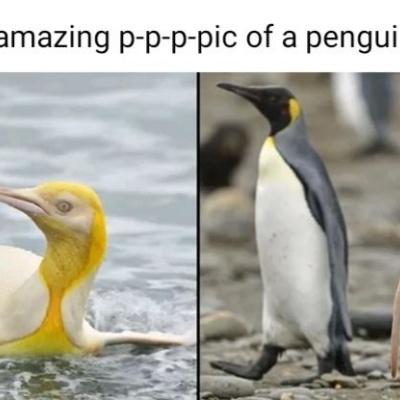The Theory of Evolution!

During recent remote science lessons, Year 6 have been learning about The Theory of Evolution. Charles Darwin first formulated his theories in his book ‘On The Origin of Species’ based on his observations of animals.
Year 6 have learnt that variation occurs in offspring – living things do not look identical to their parents. This is because genetic material from 2 sources has been combined and because of mutation. Mutation refers to random errors during DNA replication. If offspring are going to be identical to one of their parents, they would need to have the same genes in the same order. This is essentially a clone but we know that this doesn’t happen.
The thinking and reasoning behind the theory is that these variations in offspring can be advantageous for survival. For example, a mutation, a long time ago, may have been that a penguin was born with black feathers on its back – this helped the penguin survive in its cold environment because black feathers absorb sunlight and heat. Because the variation helped the penguin to survive, it survived and passed on this variation to its offspring. Given enough time, after many future generations, every penguin could have this variation. It is no longer variation but evolution. Variation does not always occur as a drastic change or mutation – often advantageous variations are passed on and become gradually more profound over time. For example, giraffes with longer necks were more likely to survive. Over time, this variation is passed on and the length of giraffe’s necks became gradually longer within each generation over time until they have eventually reached the length that they are today.
We have been introduced to some key terms during our remote lessons:
Microevolution – small changes in a species over the course of several generations e.g. an animal may change size or colour or certain limbs may become longer or shorter.
Macroevolution – given enough time and enough accumulated changes, entire new species can emerge. This is the thinking behind how, for example, whales could have evolved from amphibious mammals or how birds could have evolved from certain dinosaurs.
Natural selection – often referred to as the survival of the fittest. This means that animals who are best adapted and able to survive will survive and pass on their characteristics to offspring.
Sexual selection – a different strategy for passing on genes and characteristics to offspring. Rather than the focus being on survival, the focus is on successfully attracting a mate and passing on characteristics and genes quickly.
There is evidence to support Darwin’s original theories now (genetic coding and fossil records) but it is still classified as a theory and it is debated. Some people believe that The Theory of Evolution can explain life on Earth today as we know it, some people believe that a higher power (God) can explain life on Earth today as we know it and some people believe that a combination of these two things can explain life on Earth today as we know it. In our upcoming lessons, Year 6 will be forming their own arguments, with supporting evidence or reasoning, about their personal beliefs.
Whilst we are talking about The Theory of Evolution, did anyone see the incredible yellow penguin that has recently been photographed? It’s a great example of genetic mutation. Will this help the penguin survive and pass on this characteristic? Could this be the first penguin of many and could every penguin in a thousand years be yellow? Fascinating to think about and see genetic mutation in action! See the image below.
Here are some Year 6 views and opinions about our learning on The Theory of Evolution:
- Evolution has been very interesting because I did not know that we could have evolved from, or had the same ancestors as, apes millions of years ago.
- Evolution has been fascinating because it has been fun and interesting to learn about.
- Learning about evolution has been really fun and fascinating.
- Despite already knowing quite a bit about evolution, it’s still really fun to learn about. It has been really interesting to see how some animals could have evolved.
- It’s amazing that Charles Darwin thought of the theory before all of the technology and science that we have today.
- Evolution is amazing to learn about because I’ve learnt that animals may have looked very different a long time ago.
